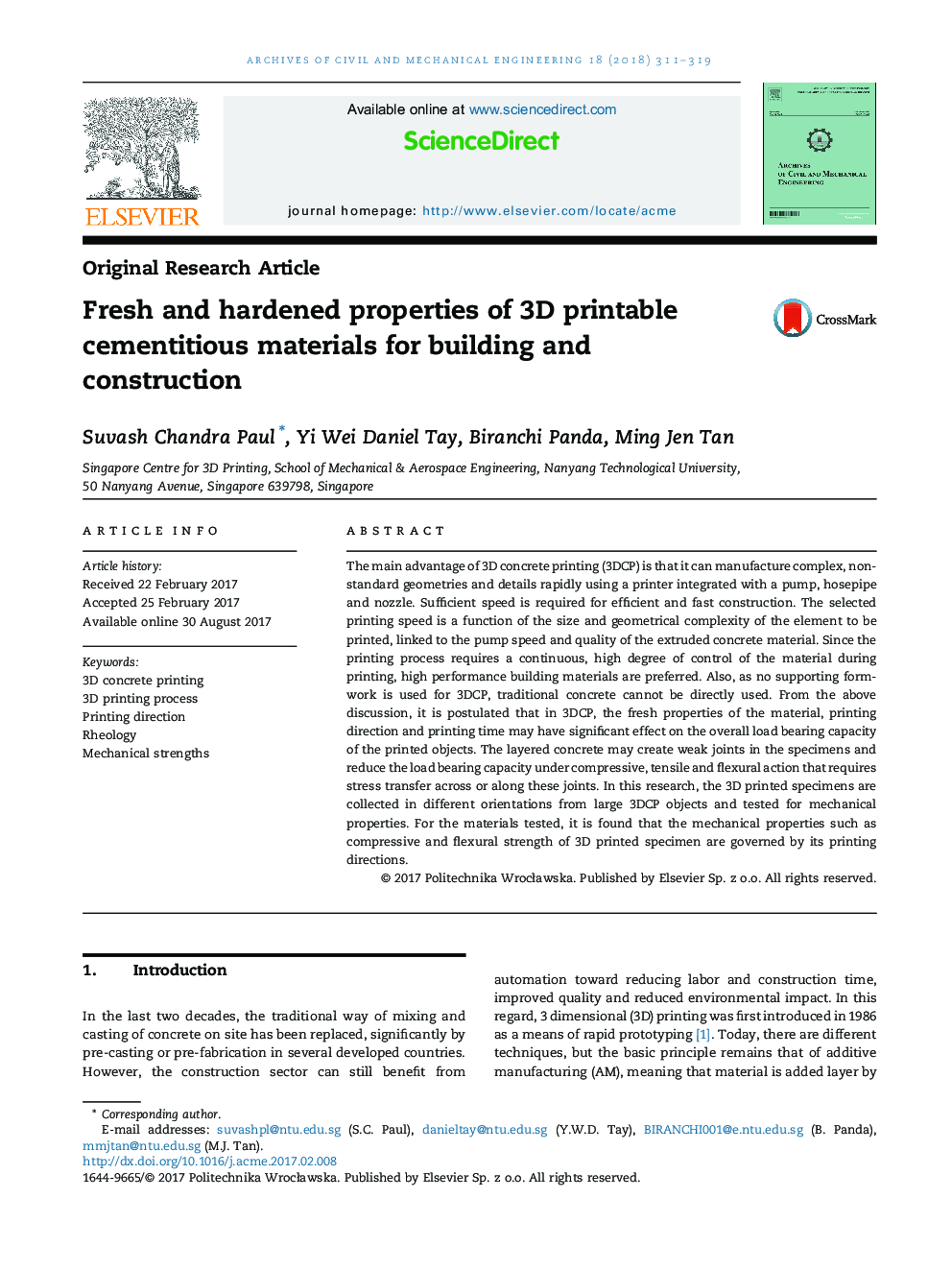| Article ID | Journal | Published Year | Pages | File Type |
|---|---|---|---|---|
| 6694809 | Archives of Civil and Mechanical Engineering | 2018 | 9 Pages |
Abstract
The main advantage of 3D concrete printing (3DCP) is that it can manufacture complex, non-standard geometries and details rapidly using a printer integrated with a pump, hosepipe and nozzle. Sufficient speed is required for efficient and fast construction. The selected printing speed is a function of the size and geometrical complexity of the element to be printed, linked to the pump speed and quality of the extruded concrete material. Since the printing process requires a continuous, high degree of control of the material during printing, high performance building materials are preferred. Also, as no supporting formwork is used for 3DCP, traditional concrete cannot be directly used. From the above discussion, it is postulated that in 3DCP, the fresh properties of the material, printing direction and printing time may have significant effect on the overall load bearing capacity of the printed objects. The layered concrete may create weak joints in the specimens and reduce the load bearing capacity under compressive, tensile and flexural action that requires stress transfer across or along these joints. In this research, the 3D printed specimens are collected in different orientations from large 3DCP objects and tested for mechanical properties. For the materials tested, it is found that the mechanical properties such as compressive and flexural strength of 3D printed specimen are governed by its printing directions.
Related Topics
Physical Sciences and Engineering
Engineering
Civil and Structural Engineering
Authors
Suvash Chandra Paul, Yi Wei Daniel Tay, Biranchi Panda, Ming Jen Tan,
